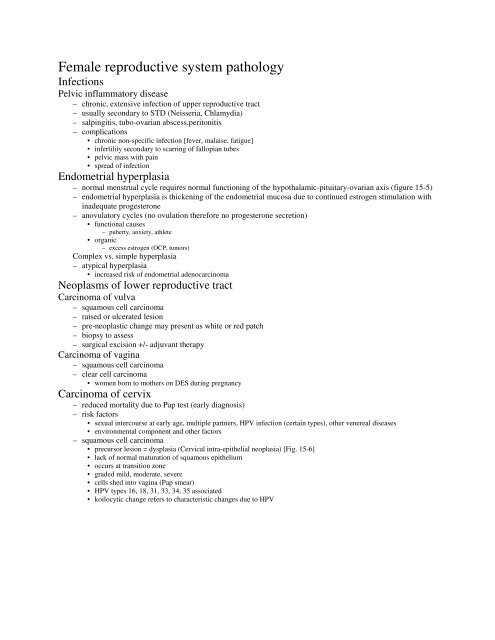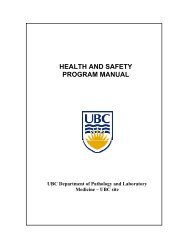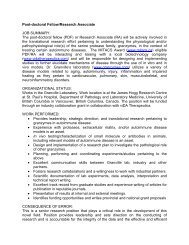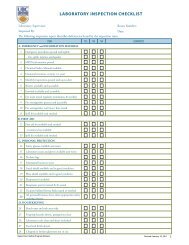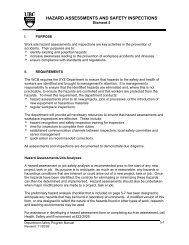Female reproductive system pathology
Female reproductive system pathology
Female reproductive system pathology
You also want an ePaper? Increase the reach of your titles
YUMPU automatically turns print PDFs into web optimized ePapers that Google loves.
<strong>Female</strong> <strong>reproductive</strong> <strong>system</strong> <strong>pathology</strong>InfectionsPelvic inflammatory disease– chronic, extensive infection of upper <strong>reproductive</strong> tract– usually secondary to STD (Neisseria, Chlamydia)– salpingitis, tubo-ovarian abscess,peritonitis– complications• chronic non-specific infection [fever, malaise, fatigue]• infertility secondary to scarring of fallopian tubes• pelvic mass with pain• spread of infectionEndometrial hyperplasia– normal menstrual cycle requires normal functioning of the hypothalamic-pituitary-ovarian axis (figure 15-5)– endometrial hyperplasia is thickening of the endometrial mucosa due to continued estrogen stimulation withinadequate progesterone– anovulatory cycles (no ovulation therefore no progesterone secretion)• functional causes– puberty, anxiety, athlete• organic– excess estrogen (OCP, tumors)Complex vs. simple hyperplasia– atypical hyperplasia• increased risk of endometrial adenocarcinomaNeoplasms of lower <strong>reproductive</strong> tractCarcinoma of vulva– squamous cell carcinoma– raised or ulcerated lesion– pre-neoplastic change may present as white or red patch– biopsy to assess– surgical excision +/- adjuvant therapyCarcinoma of vagina– squamous cell carcinoma– clear cell carcinoma• women born to mothers on DES during pregnancyCarcinoma of cervix– reduced mortality due to Pap test (early diagnosis)– risk factors• sexual intercourse at early age, multiple partners, HPV infection (certain types), other venereal diseases• environmental component and other factors– squamous cell carcinoma• precursor lesion = dysplasia (Cervical intra-epithelial neoplasia) [Fig. 15-6]• lack of normal maturation of squamous epithelium• occurs at transition zone• graded mild, moderate, severe• cells shed into vagina (Pap smear)• HPV types 16, 18, 31, 33, 34, 35 associated• koilocytic change refers to characteristic changes due to HPV


